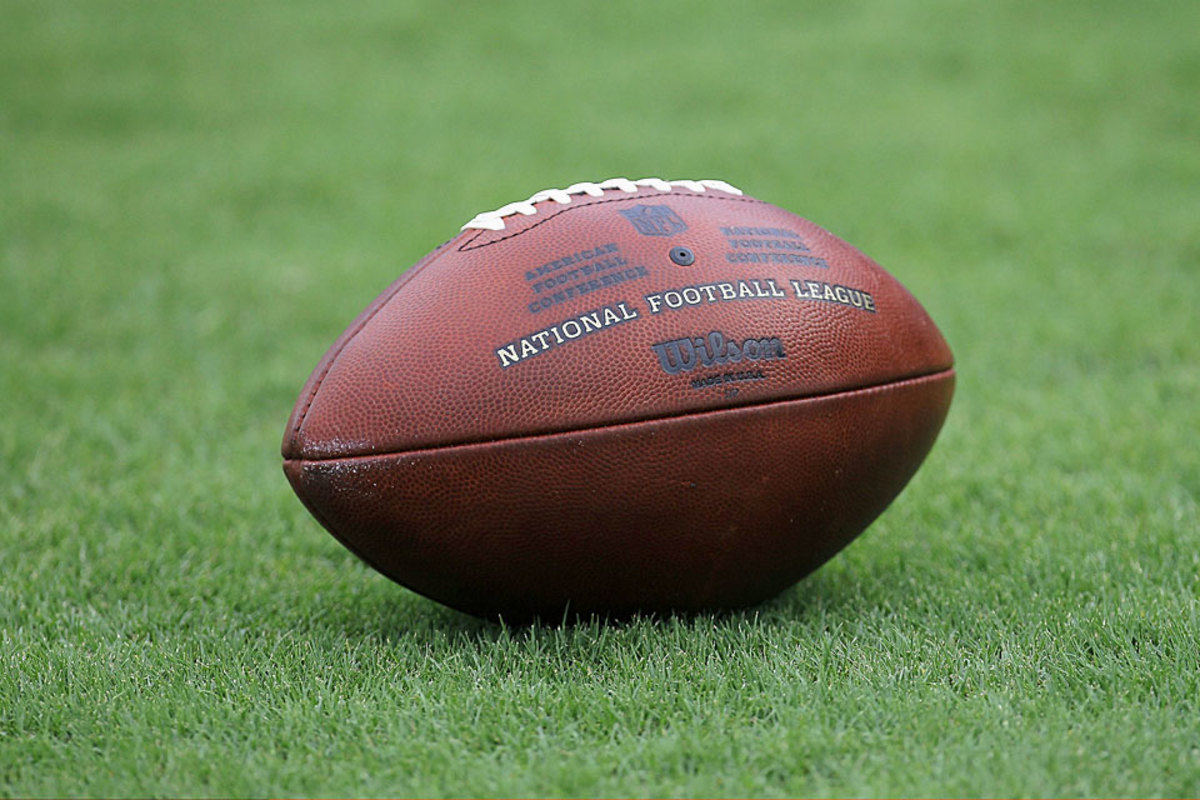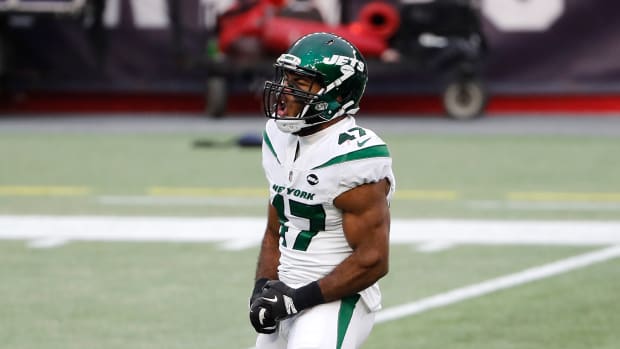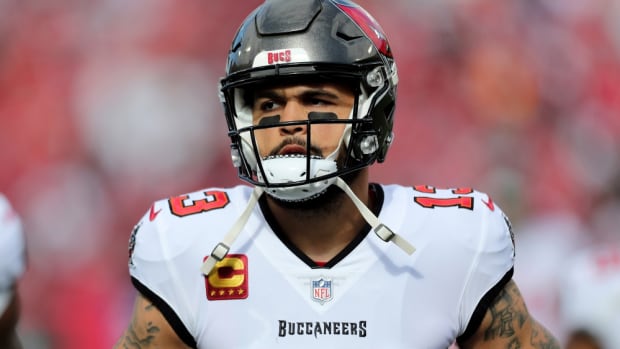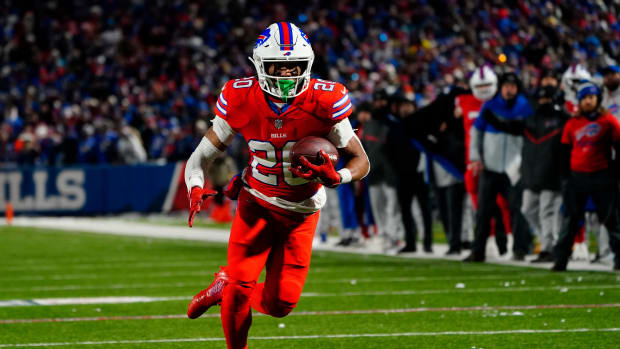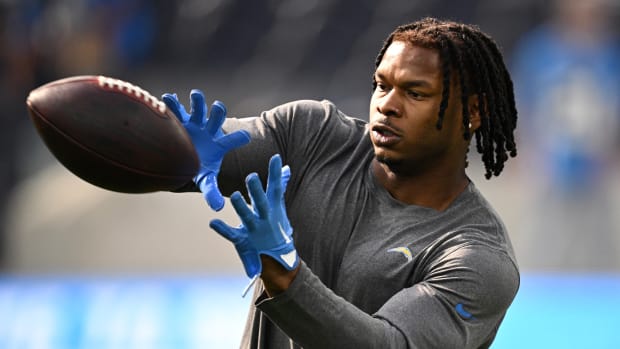The Most Wonderful Season of All
We have reached the time of year when NFL teams transition to in-season mode. The long, arduous process of roster assembling will be largely completed by the end of this week. Sure, there will be minor personnel turnover during the season and perhaps a contract extension or two, but front offices now turn the products they’ve constructed over to the tutelage of coaching staffs. And while the book on 2014 is yet to be written on the field, the front office and scouting staff have largely turned the page. Their focus is now on 2015.
Here are a few important start-of-season tasks occurring in every team’s facilities this week—tasks that will further shape the product on the field over the next four months.
53 v. 46
A universal myth about setting the final roster is that the best 53 players are the true survivors once cuts have been made. However, in final roster meetings going on in every team facility, it is the 46-man active game-day roster that is the primary focus. Teams are now debating whether, as part of the 46, there will be four or five receivers, five or six linebackers, seven or eight offensive lineman, etc. Injuries, the bane of every team’s existence, play a critical role, forcing the team to go heavy at one or more positions. Carrying an extra player or two in one area means going light elsewhere, perhaps dashing the dreams of a sixth linebacker or a fourth running back.
FIRST PERSON:Tales From the NFL Negotiating Tables
During my years of attending NFL meetings, a proposal to increase the game-day roster would be occasionally brought to vote, but it never passed. The standard logic behind the rule, as I was told many times, was about injury equality and preserving competitive balance. I understand the rationale, but never understood the rule as 1) injuries eventually even out, and 2) I rarely, if ever, see a game that does not have healthy scratches on both sidelines.
From a financial perspective, I always shake my head when watching healthy players who are ready and willing to play—and paid to do so—but aren’t dressing due to this rule. And on an emotional level, I have seen their quiet disappointment when told two hours before the game that they’re going to be “down” that week. Even if they don’t play, I have always felt these players should at least be given an opportunity to wear a uniform and feel more a part of the team.
Cap room
Next week, team salary cap calculations switch from an offseason top 51 view (counting only the top 51 salaries on the team, along with all other proration and miscellaneous charges) to an in-season full view, encompassing every charge on the team.
And what are those charges? Everything, including all salaries, prorated signing bonuses, roster and reporting bonuses, offseason workout bonuses, injury settlements; players on practice squads, injured reserve or suspended lists; LTBE incentives. LTBE (likely to be earned) incentives count against the cap if the player has previously reached such a threshold in his career (such as a 1,000 yard rushing incentive). LTBE incentives not earned are credited back to the cap in reconciliation after the season, while NLTBE (not likely to be earned incentives) that are earned are debited in such reconciliation. Managing the cap is like stuffing an octopus into a box; there will always something hanging out.
BUSINESS AS USUAL:Andrew Brandt breaks down the NFL from every financial angle
I tried to go into a new season with at least $10 million in cap room, allowing for injury resources—to carry players on injured reserve and signs replacement players—and potential contract extensions later in the season. Although year-to-year cap carryover is now allowed under the new CBA, I always felt the most strategic use of cap room was to extend ascending players in-season.
Vested veterans
Players with four years of service are vested veterans, triggering certain benefits. One such benefit is that if a veteran’s contract is terminated after he makes a team’s opening roster, he’s entitled to full termination pay—the entire balance of his remaining salary.
As for those vested veterans who are signed after the first week of the season, the team’s liability is reduced to four weeks of pay at the rate of the highest (10-year) minimum salary rate. With that in mind, we see vested veterans released prior to opening weekend, only to return in a wink-wink (illegal) arrangement the following week. Termination pay claims are filed after the season, with players only entitled to one such claim in their career.
A SMART IDEA:Why an NFL developmental league makes sense
While we would like to believe that all roster decisions are football driven and independent of any financial considerations, decision-makers are certainly aware of which players are vested and the liability attached to them. More and more, vested veterans are being replaced by younger (cheaper) players and the contract advantages that teams have over them. For those who haven’t been paying attention, the business of football usually wins out.
Ready lists
Pro personnel staffs are especially busy during the preseason, scouring other teams’ rosters through training camp practices and preseason games. Indeed, the second halves of preseason games—when most fans and media have turned their attention elsewhere—are crucial scouting periods for teams still composing the lower parts of the roster.
Scouts report back to the general manager about a player they feel is better than, say, their team’s sixth wide receiver, fifth cornerback, or ninth lineman. This advance scouting is folded into team “ready lists” for each position arranged in each teams’ War Room (the in-season use for that space).
THINK AGAIN:The QB Contract Mirage
These ready lists act as the first point of reference when a team suffers an injury or looks for an upgrade (the Rams’ ready list for quarterbacks became prominent this week after they lost Sam Bradford to a torn ACL). I would always travel with the ready list handy; I called many agents during games when we suffered an injury, arranging for a tryout and/or signing the next day. The roster is never set, with the waiver wire a constant source of churn.
The shift is happening, from offseason to in-season mode. It is time for a few months of actual games amidst the 12-month business of football
Brandt’s Rant
The Dolphins should have known what they were getting in Richie Incognito, but it seems teams still haven’t learned. (Richard C. Lewis/Icon SMI)
After a respite of several months, Richie Incognito is back in the news on two fronts: 1) the Buccaneers are among a few reported teams interested in potentially signing him, and 2) the NFL has not (and will not) discipline him. Last year’s suspension was by the Dolphins, not the league.
Incognito is a survivor. He has consistently worn out his welcome with multiple college and NFL teams, yet always seems to find another one. His next stop will be closer to a seventh chance than a second one. And Roger Goodell has commented proudly on the progress he has seen from Incognito.
Pardon my jaded nature, but this seems pretty transparent. As he always does, Incognito knows what to say and how to act toward gaining employment. He is a seasoned veteran at doing what needs to be done in order to get more chances. And, in a diabolical twist, Incognito may just sign with a team (probably after Week 1, as outlined above regarding vested veterans) without having to endure the grind of training camp.
Richie Incognito, a true survivor.
































